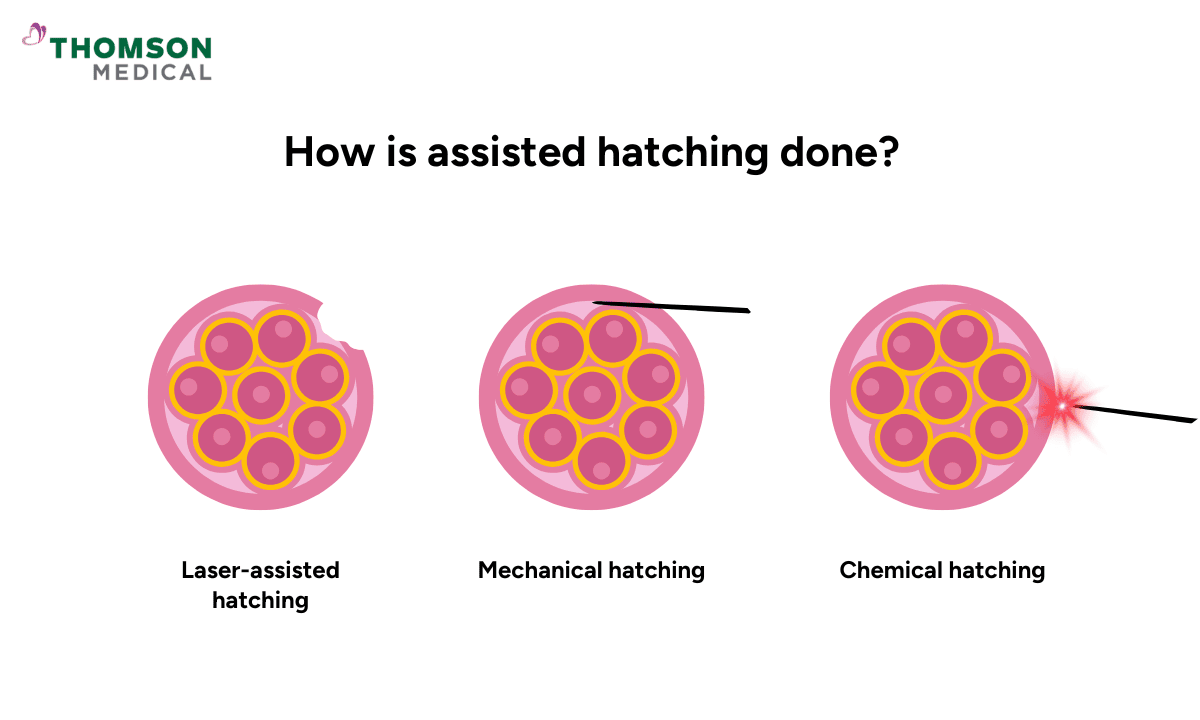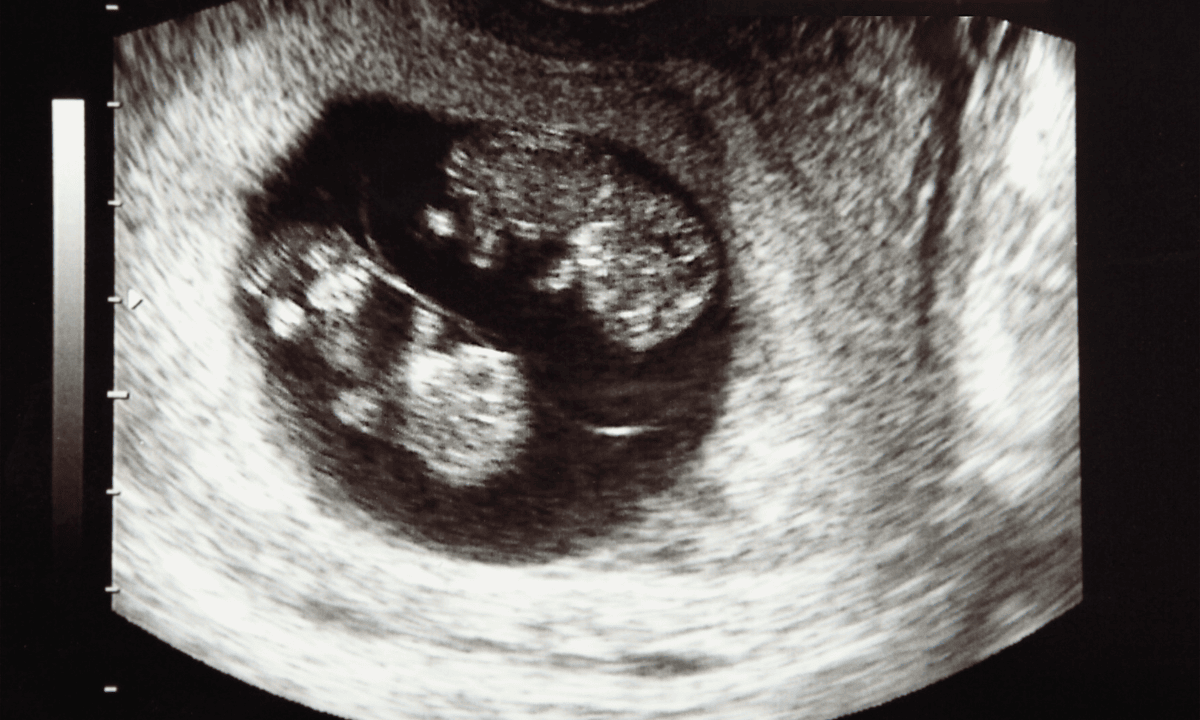Trying to start a family can be exciting, but it often comes with unexpected challenges. Even when everything seems normal, conception doesn’t always happen on the first try, leaving couples with questions and uncertainty. You're not alone in feeling this way. At times like this, small interventions can make a meaningful difference especially for couples experiencing repeated implantation failure.
Fortunately, there is a method to support embryos at the critical moments in their development. Assisted hatching (AH) is one such procedure, carefully designed to help embryos “hatch” from their protective layer and increase the chances of successful implantation.
What is assisted hatching?
Every embryo is surrounded by a protective shell called the zona pellucida. Around day 5-6, when the embryo reaches the blastocyst stage (a stage of early embryonic development), the embryo naturally breaks through this shell (called the hatching) to attach to the uterine wall.
AH is a lab procedure that helps the hatching process along by thinning or creating a tiny opening in this protective shell before your embryo transfer. The idea is simple—if the shell is easier to break through, maybe implantation will be easier too.
When might the doctor suggest assisted hatching?
Assisted hatching isn't needed for every In Vitro Fertilisation (IVF) cycle, but certain factors may make it beneficial. Your doctor might suggest it if:
Thick or hardened zona pellucida:
If your embryos are measured to have a zona pellucida thicker than 15 micrometers (a tiny unit of measurement), your embryologist may recommend assisted hatching. This can happen due to age, certain hormonal factors, or the freezing-and-thawing process.
Advanced maternal age:
Women aged 37 or older are more likely to have embryos with thicker outer layers, which may benefit from assisted hatching.
Frozen-thawed embryos:
If you're using embryos that were previously frozen, the thawing process can harden the outer shell, potentially making natural hatching more difficult.
Previous IVF attempts with suspected hatching issues:
If you've had IVF cycles that didn’t result in pregnancy and your doctor suspects the embryo's inability to hatch might be part of the problem, assisted hatching could be recommended.
Your doctor will carefully evaluate your embryos and discuss whether this procedure is right for you.
If you have concerns about assisted embryo hatching, embryo quality or are undergoing IVF treatment, consult a fertility specialist. Contact Thomson Medical to schedule a consultation and receive personalised care tailored for your reproductive health needs.
How is assisted hatching done?

There are three main methods, each designed to gently weaken or open the zona pellucida:
Laser-assisted hatching:
A precise laser beam creates a small opening in the shell. This is the most commonly used method because it offers excellent control and minimises the risk of damaging the embryo.
Mechanical hatching:
The embryologist carefully holds the embryo and uses a tiny glass needle to make a small slit in the outer layer.
Chemical hatching:
A mild acid solution softens the zona pellucida. While effective, this method is used less frequently today.
Your doctor will select the method based on their experience and your embryo’s characteristics. They will guide you toward the approach that best suits your unique situation.
Our fertility specialists
Loading...
How does the assisted hatching procedure work?
Assisted hatching is done during IVF cycles, just before the embryo is placed back into the uterus. It can be performed on embryos either a few days after fertilisation (day 2-3) or at the blastocyst stage (around day 5-6).
During the procedure, the embryologist holds the embryo under a microscope and makes a tiny opening in its outer shell using a laser, chemical, or mechanical method. The embryo is then returned to the incubator for a short time before being transferred. This procedure can help the embryo attach to the uterus more easily and may improve the chances of pregnancy.
The entire process is quick and causes you no discomfort.
What are the risks of assisted hatching?

Risks with assisted hatching are generally low, but they do exist:
Embryo damage:
There's a small chance the procedure could harm the embryo or its cells during manipulation. This is uncommon when performed by trained embryologists, but it's possible.
Increased chance of identical twins:
Assisted hatching may lead to increase the risk of multiple pregnancy. The procedure can occasionally cause an embryo to split into two, resulting in monozygotic twinning (identical twins), which increases the risk of medical complications compared to a singleton pregnancy.
While the risks are generally low, it’s important to be informed. Request an appointment with Thomson Medical to speak with our fertility experts and receive guidance tailored to your situation.
FAQ
How successful is IVF with assisted hatching?
Based on the study, assisted hatching with laser-assisted hatching achieving a 52% clinical pregnancy rate, compared to 30% for the control group without any assisted hatching. The implantation rates were also highest with laser-assisted hatching at 48%, compared to 26% for the control group on assisted conception (IVF and ICSI).
What happens after embryo transfer with assisted hatching?
After an embryo transfer with assisted hatching, the embryo begins the process of implanting into the uterine lining, which usually takes several days. Assisted hatching facilitates this process by helping the embryo more easily break through its protective shell.
Is assisted hatching the same as ICSI?
No. ICSI (intracytoplasmic sperm injection) is a fertilisation method in which a single sperm is injected directly into an egg to help them fertilise. Assisted hatching works with an already-fertilised embryo to help it implant. They serve different purposes and can be used together if your doctor recommends both.
How long does implantation take after assisted hatching?
For embryos transferred at day 5-6 (blastocyst stage), implantation usually occurs within 1-2 days. For day 3 transfers, implantation may take 3-5 days. Timing depends on your embryo's stage of development, its quality, and how receptive your uterine lining is.
What are the risks of assisted hatching?
Yes, assisted hatching carries some risks, although they are generally low. Manipulating the embryo’s outer layer (zona pellucida) or its individual cells (blastomeres) can, in rare cases, reduce embryo viability. There is also a slight increase in the chance of having identical twins (monozygotic twinning), which carries higher medical risks compared to a singleton pregnancy.
Is a fully hatched embryo a good sign?
Generally, yes. A fully hatched embryo has successfully broken out of its protective shell, which suggests developmental strength. However, once fully hatched, embryos are slightly more fragile, and they may have lower pregnancy outcomes compared to embryos at earlier hatching stages.
Does assisted hatching increase chances of twins?
Assisted hatching slightly increases the risk of identical twins (monozygotic twins) because the procedure can occasionally interfere with the zona pellucida, potentially causing an embryo to split. However, the overall risk remains low.
The information provided is intended for general guidance only and should not be considered medical advice. For personalised recommendations and tailored advice based on your unique situations, please consult a specialist at Thomson Medical. Request an appointment with Thomson Medical today.
